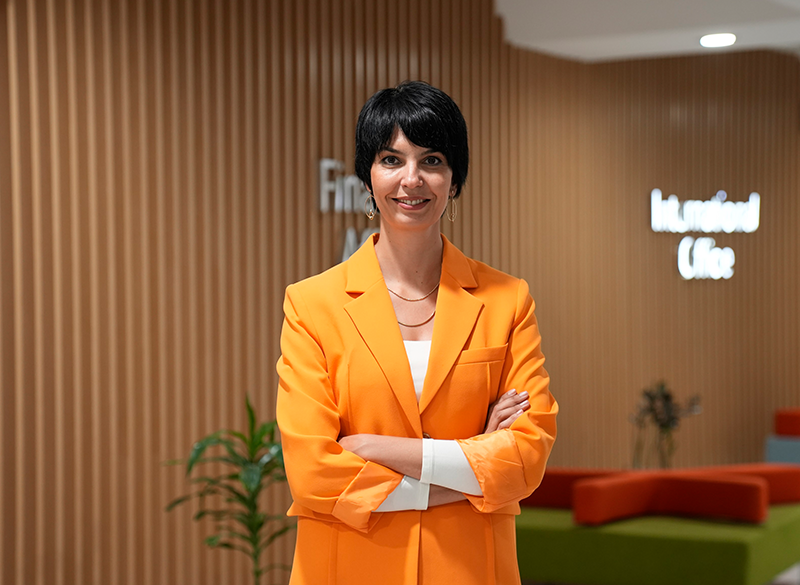The Invisible Language of the Smart Future: MATHEMATICS

Mathematics is not only about numbers. It is the language of nature, technology, and human thinking. Dr. Derya Çoksak from the Department of Mathematics explains how we use this universal language in both education and technology.
Dr. Çoksak says, "Mathematics is the strongest language for understanding nature and building the future," and adds:
"Without noticing, we start living with mathematics in childhood. We count food to understand quantity. We even make a geometric calculation while taking steps. I explain mathematics to my students as the art of defining and solving problems. Mathematics is the strongest tool given to us to understand the universe."
“Mathematics Is Not Something to Fear, It Is Something to Explore”
Dr. Çoksak says some students develop prejudice against mathematics at an early age and notes:
"We should offer mathematics to children not only as a class but as an area to explore. We must help them be curious and ask questions. Instead of saying, 'What use is this to me?' they should say, 'I need to try a new way.'
Mathematics appears not only in class but in every part of life. It exists in engineering, technology, economy and even in art. When students see these real life links, mathematics makes sense."
“Mathematics Builds Creativity and Critical Thinking”
According to Dr. Çoksak, mathematics is not only a tool for solving problems. It also builds creativity and critical thinking.
"There is not only one way to solve a problem. Mathematics teaches us to think in different ways. This develops imagination and logical thinking.
Think about thousands of phones connecting to base stations in a city at the same time. To understand this complex case, we build mathematical models. Simplifying a complex system means using logic and imagination together."
This example shows that mathematics lives not only in notebooks but also in the phone in our hand and in the systems of a city.
“Mathematics Is the Hidden Backbone of 5G and 6G”
Dr. Çoksak notes that mathematics will play a key role in future technologies, especially in artificial intelligence, data science, communication systems, and bioinformatics.
"5G and 6G are not only faster internet," she says. "They are the base of the internet of things, smart cities, driverless cars, and remote surgery. The safe and efficient work of these systems depends on mathematical models. In short, mathematics is the hidden force behind the smart world of the future."
Dr. Çoksak gives an example from her research:
"For faster and safer phone and internet use, we study network systems. Measuring the performance of these systems usually takes a long time. With a specialized mathematical model, we can analyze this much faster and more accurately. This helps us plan better systems in advance."
This shows how mathematics works in real-life systems that we do not see but use every day..”
Mathematics Moves From Lab to Real Life
Dr. Çoksak encourages her students to take part in real research, not only classroom work.
"In unmanned aerial vehicle projects, mathematics appears in every step: route planning, image processing, data from sensors, and more. We use advanced mathematical methods to understand data, find the shortest route, and make images clearer.
Students see how equations on a board turn into real systems. For them, the biggest realization is this: mathematics is not only a course. It is the base of a flying drone, an artificial intelligence in a hospital or a traffic system in a city.".”
Future Math Education: Coding, Data, and Modeling
Dr. Çoksak says math education must be practice-based and connected to other fields.
"Computers now do complex calculations. Our duty is to teach students to ask the right questions, turn real problems into mathematical language and use the right tools to solve them."
In future classes, programs such as MATLAB, Python, and R will be used. There will be AI-supported learning and virtual labs. The goal is to raise thinkers who can understand and design complex systems with technology as a tool.
This way, students will not only learn math. They will learn to read data, build systems, and produce solutions.”
“Mathematics Is the Quiet Force That Shapes the Future”
Dr. Çoksak sums up with:
"Mathematics is not something to fear. It is the clearest way to understand the order of the universe, the rise of technology, and the creativity of the human mind. Mathematics is the quiet force that shapes the future."
Press: DHA | AA | Haberler | Son Dakika